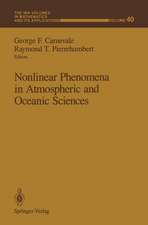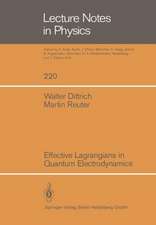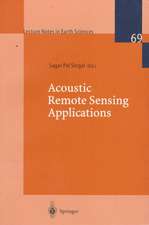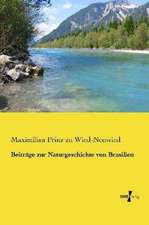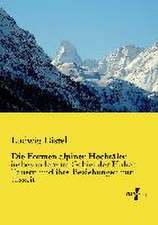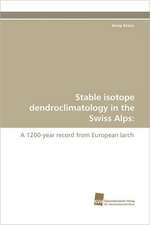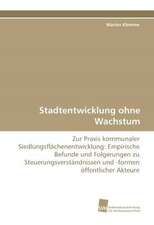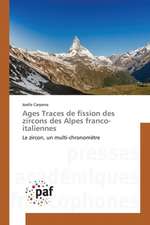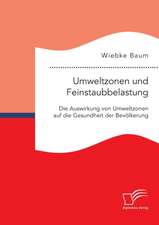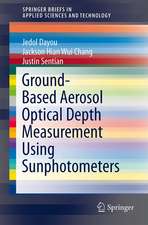Thawing Permafrost: Permafrost Carbon in a Warming Arctic
Autor J. van Huisstedenen Limba Engleză Paperback – 20 aug 2021
An explanation is given on how permafrost becomes loaded with ice and carbon. Gas hydrates are also introduced. Structures and processes formed by the intense freeze-thaw action in the active layer are considered (e.g. ice wedging, cryoturbation), and the processes that occur as the permafrost thaws, (pond and lake formation, erosion).
The book introduces soil carbon accumulation and decomposition mechanisms and how these are modified in a permafrost environment. A separate chapter deals with deep permafrost carbon, gas reservoirs and recently discovered methane emission phenomena from regions such as Northwest Siberia and the Siberian yedoma permafrost.
| Toate formatele și edițiile | Preț | Express |
|---|---|---|
| Paperback (1) | 656.54 lei 38-44 zile | |
| Springer International Publishing – 20 aug 2021 | 656.54 lei 38-44 zile | |
| Hardback (1) | 919.97 lei 38-44 zile | |
| Springer International Publishing – 2 ian 2020 | 919.97 lei 38-44 zile |
Preț: 656.54 lei
Preț vechi: 852.65 lei
-23% Nou
Puncte Express: 985
Preț estimativ în valută:
125.63€ • 131.50$ • 104.56£
125.63€ • 131.50$ • 104.56£
Carte tipărită la comandă
Livrare economică 28 martie-03 aprilie
Preluare comenzi: 021 569.72.76
Specificații
ISBN-13: 9783030313814
ISBN-10: 3030313816
Pagini: 508
Ilustrații: XV, 508 p. 202 illus., 169 illus. in color.
Dimensiuni: 155 x 235 mm
Greutate: 0.93 kg
Ediția:1st ed. 2020
Editura: Springer International Publishing
Colecția Springer
Locul publicării:Cham, Switzerland
ISBN-10: 3030313816
Pagini: 508
Ilustrații: XV, 508 p. 202 illus., 169 illus. in color.
Dimensiuni: 155 x 235 mm
Greutate: 0.93 kg
Ediția:1st ed. 2020
Editura: Springer International Publishing
Colecția Springer
Locul publicării:Cham, Switzerland
Cuprins
Chapter 1. Introduction.- Chapter 2. The energy balance of permafrost soils and ecosystems.- Chapter 3. The role of ground ice.- Chapter 4. Permafrost carbon quantities and fluxes.- Chapter 5. Permafrost in transition.- Chapter 6. Vegetation change.- Chapter 7. Methane.- Chapter 8. Models: Forecasting the present and future of permafrost.- References.- Glossary.
Notă biografică
Ko (Jacobus) van Huissteden studied Physical Geography at the Vrije Universiteit in Amsterdam in the 80's. In 1990 he acquired a PhD with a thesis on Ice age river deposits in the Netherlands. These deposits proved an inspiring source of information on paleo-permafrost, including permafrost thaw features and the permafrost carbon cycle. After a short intermezzo in IT development for Earth Sciences and soil remediation research, Van Huissteden returned to Vrije Universiteit. His research work and teaching included research on Pleistocene fluvial and eolian sediments in Europe and Asia, peatland carbon cycle studies in The Netherlands, Geoscientific model development. Since 2004 this also includes research on the permafrost carbon cycle in Northeastern Siberia. He contributed to acquisition of research funding and expansion of research at the Kytalyk tundra research station in Northern Yakutia. In 2010 he received an award from the Yakutian Science Centre of the Russian Academy of Sciences for his contribution to international cooperation to tundra ecosystems research. He is author or co-author of 110+ research papers and book chapters. After his retirement as associate professor in 2018, he is still active as consultant in peatland soil.
Textul de pe ultima copertă
This book provides a cross-disciplinary overview of permafrost and the carbon cycle by providing an introduction into the geographical distribution of permafrost, with a focus on the distribution of permafrost and its soil carbon reservoirs. The chapters explain the basic physical properties and processes of permafrost soils: ice, mineral and organic components, and how these interact with climate, vegetation and geomorphological processes. In particular, the book covers the role of the large quantities of ice in many permafrost soils which are crucial to understanding carbon cycle processes.
An explanation is given on how permafrost becomes loaded with ice and carbon. Gas hydrates are also introduced. Structures and processes formed by the intense freeze-thaw action in the active layer are considered (e.g. ice wedging, cryoturbation), and the processes that occur as the permafrost thaws, (pond and lake formation, erosion).
The book introduces soil carbonaccumulation and decomposition mechanisms and how these are modified in a permafrost environment. A separate chapter deals with deep permafrost carbon, gas reservoirs and recently discovered methane emission phenomena from regions such as Northwest Siberia and the Siberian yedoma permafrost.
An explanation is given on how permafrost becomes loaded with ice and carbon. Gas hydrates are also introduced. Structures and processes formed by the intense freeze-thaw action in the active layer are considered (e.g. ice wedging, cryoturbation), and the processes that occur as the permafrost thaws, (pond and lake formation, erosion).
The book introduces soil carbonaccumulation and decomposition mechanisms and how these are modified in a permafrost environment. A separate chapter deals with deep permafrost carbon, gas reservoirs and recently discovered methane emission phenomena from regions such as Northwest Siberia and the Siberian yedoma permafrost.
Caracteristici
Gives an interdisciplinary introduction into a rapidly growing research field, linking climate, ecosystems and earth surface processes in thawing arctic landscapes Provides a unique insight into rapidly changing permafrost landscapes and ecosystems Examines climate change impacts on a quarter of the northern hemisphere's land surface: permafrost

